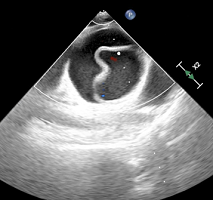1. Catani M, Dell’acqua F, Thiebaut de Schotten M. A revised limbic system model for memory, emotion and behaviour. Neurosci Biobehav Rev. 2013; 37(8): 1724-1737. doi: 10.1016/j.neubiorev.2013.07.001
2. Arrigo A, Mormina E, Anastasi GP, et al. Constrained spherical deconvolution analysis of the limbic network in human, with emphasis on a direct cerebello-limbic pathway. Front Hum Neurosci. 2014; 8: 987. doi: 10.3389/fnhum.2014.00987
3. Arrigo A, Mormina EM, Calamuneri A, et al. Amygdalar and hippocampal connections with brainstem and spinal cord: A diffusion MRI study inhuman brain. Neuroscience. 2016. pii: S0306-4522(16)30706-0. doi: 10.1016/j.neuroscience.2016.12.016
4. Castle M, Comoli E, Loewy AD. Autonomic brainstem nuclei are linked to the hippocampus. Neuroscience. 2005; 134(2): 657-669. doi: 10.1016/j.neuroscience.2005.04.031
5. Giesler GJ Jr, Katter JT, Dado RJ. Direct spinal pathways to the limbic system for nociceptive information. Trends Neurosci. 1994; 17(6): 244-250. doi: 10.1016/0166-2236(94)90007-8
6. Newman HM, Stevens RT, Apkarian AV. Direct spinal projections to limbic and striatal areas: Anterograde transport studies from the upper cervical spinal cord and the cervical enlargement in squirrel monkey and rat. J Comp Neurol. 1996; 365(4): 640-658. doi: 10.1002/(SICI)1096-9861(19960219)365:4<640::AID-CNE10>3.0.CO;2-L
7. Tournier JD, Calamante F, Connelly A. Robust determination of the fibre orientation distribution in diffusion MRI: Non-negativity constrained super-resolved spherical deconvolution. Neuroimage. 2007; 35(4): 1459-1472. doi: 10.1016/j.neuroimage.2007.02.016
8. Usunoff KG, Itzev DE, Rolfs A, Schmitt O, Wree A. Brain stem afferent connections of the amygdala in the rat with special references to a projection from the parabigeminal nucleus: A fluorescent retrograde tracing study. Anat Embryol (Berl). 2006; 211(5): 475-496. doi: 10.1007/s00429-006-0099-8
9. Deboer T, Ross RJ, Morrison AR, Sanford LD. Electrical stimulation of the amygdala increases the amplitude of elicited ponto-geniculo-occipital waves. Physiol Behav. 1999; 66(1): 119-124. doi: 10.1016/s0031-9384(98)00281-9
10. Liddell BJ, Brown KJ, Kemp AH, et al. A direct brainstem–amygdala–cortical ‘alarm’ system for subliminal signals of fear. Neuroimage. 2005; 24(1): 235-243. doi: 10.1016/j.neuroimage.2004.08.016
11. García-Medina NE, Miranda MI. Nucleus of the solitary tract chemical stimulation induces extracellular norepinephrine release in the lateral and basolateral amygdala. Brain Stimul. 2013; 6(2): 198-201. doi: 10.1016/j.brs.2012.03.020
12. Carter ME, Soden ME, Zweifel LS, Palmiter RD. Genetic identification of a neural circuit that suppresses appetite. Nature. 2013; 503(7474): 111-114. doi: 10.1038/nature12596
13. Gasbarri A, Packard MG, Campana E, Pacitti C. Anterograde and retrograde tracing of projections from the ventral tegmental area to the hippocampal formation in the rat. Brain Res Bull. 1994; 33(4): 445-452. doi: 10.1016/0361-9230(94)90288-7
14. Gasbarri A, Sulli A, Packard MG. The dopaminergic mesencephalic projections to the hippocampal formation in the rat. Prog Neuropsychopharmacol Biol Psychiatry. 1997; 21(1): 1-22. doi: 10.1016/S0278-5846(96)00157-1
15. Kirk IJ, McNaughton N. Mapping the differential effects of procaine on frequency and amplitude of reticularly elicited hippocampal rhythmical slow activity. Hippocampus. 1993; 3(4): 517-525. doi: 10.1002/hipo.450030411
16. Mayer EA. Gut feelings: the emerging biology of gut-brain communication. Nat Rev Neurosci. 2011; 12(8): 453-466. doi: 10.1038/nrn3071
17. Krogias C, Hoffmann K, Eyding J, et al. Evaluation of basal ganglia, brainstem raphe and ventricles in bipolar disorder by transcranial sonography. Psychiatry Res. 2011; 194(2): 190-197. doi: 10.1016/j.pscychresns.2011.04.002
18. Sköld M, Källstrand J, Nehlstedt S, et al. Thalamocortical abnormalities in auditory brainstem response patterns distinguish DSM-IV bipolar disorder type I from schizophrenia. J Affect Disord. 2014; 169: 105-111. doi: 10.1016/j.jad.2014.08.002
19. Yamamoto T, Tsuji S. Anti-Ma2-associated encephalitis and paraneoplastic limbic encephalitis [In Japanese]. Brain Nerve. 2010; 62(8): 838-851. doi: 10.11477/mf.1416100733
20. Waragai M, Chiba A, Uchibori A, Fukushima T, Anno M, Tanaka K. Anti-Ma2 associated paraneoplastic neurological syndrome presenting as encephalitis and progressive muscular atrophy. J Neurol Neurosurg Psychiatry. 2006; 77(1): 111-113. doi: 10.1136/jnnp.2005.068775
21. Carabotti M, Scirocco A, Maselli MA, Severi C. The gut-brain axis: Interactions between enteric microbiota, central and enteric nervous systems. Ann Gastroenterol. 2015; 28(2): 203-209. Web site. http://annalsgastro.gr/index.php/annalsgastro/article/view/1959/1537. Accessed December 23, 2016
22. Qi R, Liu C, Weng Y, et al. Disturbed interhemispheric functional connectivity rather than structural connectivity in irritable bowel syndrome. Front Mol Neurosci. 2016; 9: 141. doi: 10.3389/fnmol.2016.00141
23. Weng Y, Qi R, Liu C, et al. Disrupted functional connectivity density in irritable bowel syndrome patients. Brain Imaging Behav. 2016. doi: 10.1007/s11682-016-9653-z









